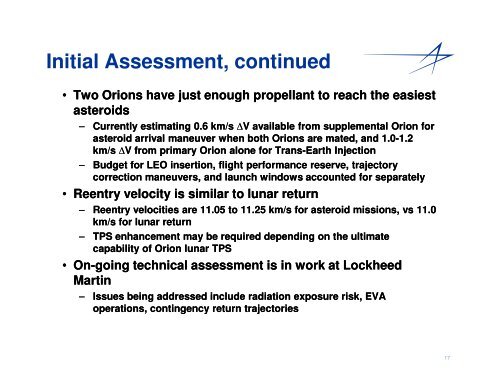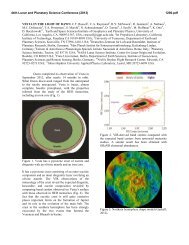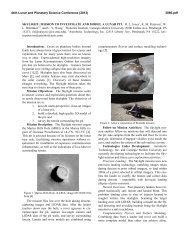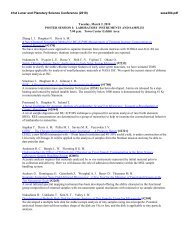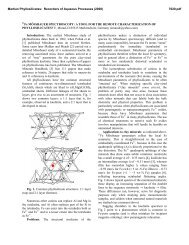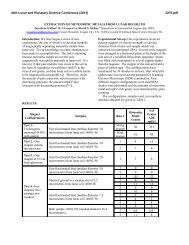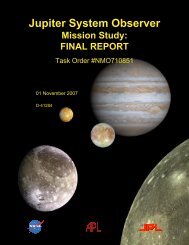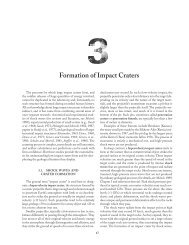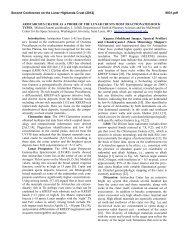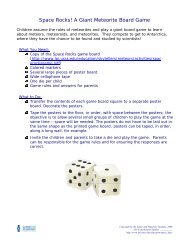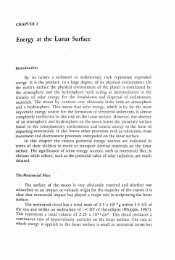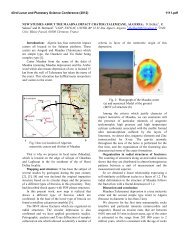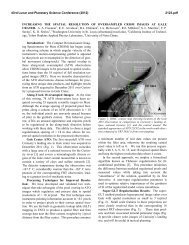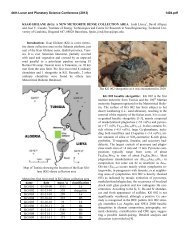Plymouth Rock: An Early Human Asteroid Mission Using Orion
Plymouth Rock: An Early Human Asteroid Mission Using Orion
Plymouth Rock: An Early Human Asteroid Mission Using Orion
You also want an ePaper? Increase the reach of your titles
YUMPU automatically turns print PDFs into web optimized ePapers that Google loves.
Initial Assessment, continued<br />
• Two <strong>Orion</strong>s have just enough propellant to reach the easiest<br />
asteroids<br />
– Currently estimating 0.6 km/s ∆V available from supplemental <strong>Orion</strong> for<br />
asteroid arrival maneuver when both <strong>Orion</strong>s are mated, and 1.0-1.21.2<br />
km/s ∆V from primary <strong>Orion</strong> alone for Trans-Earth Injection<br />
– Budget for LEO insertion, flight performance reserve, trajectory<br />
correction maneuvers, and launch windows accounted for separately<br />
• Reentry velocity is similar to lunar return<br />
– Reentry velocities are 11.05 to 11.25 km/s for asteroid missions, vs 11.0<br />
km/s for lunar return<br />
– TPS enhancement may be required depending on the ultimate<br />
capability of <strong>Orion</strong> lunar TPS<br />
• On-going technical assessment is in work at Lockheed<br />
Martin<br />
– Issues being addressed include radiation exposure risk, EVA<br />
operations, contingency return trajectories<br />
17


